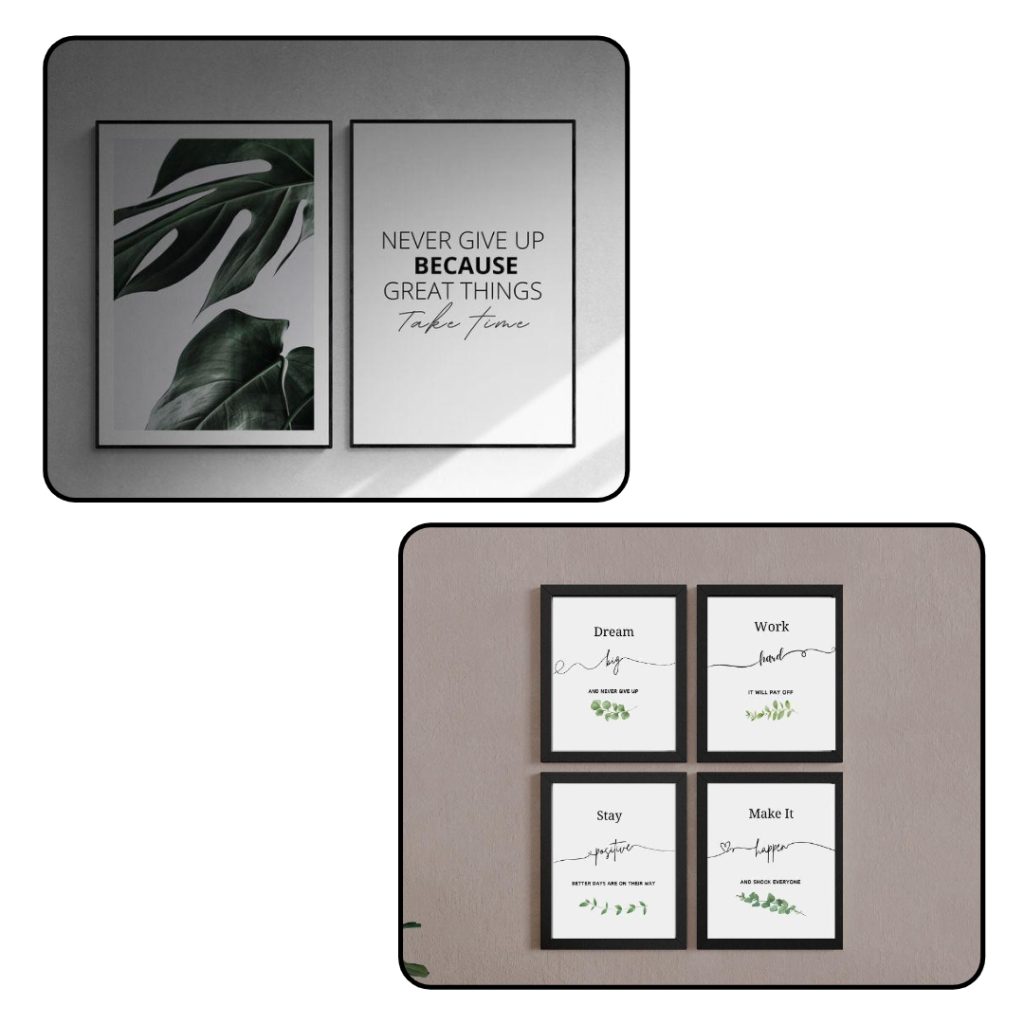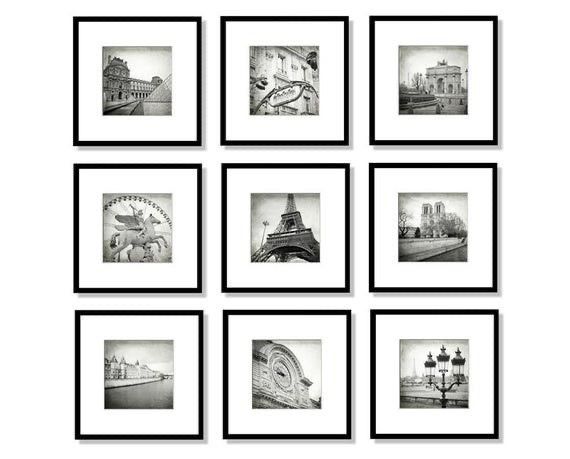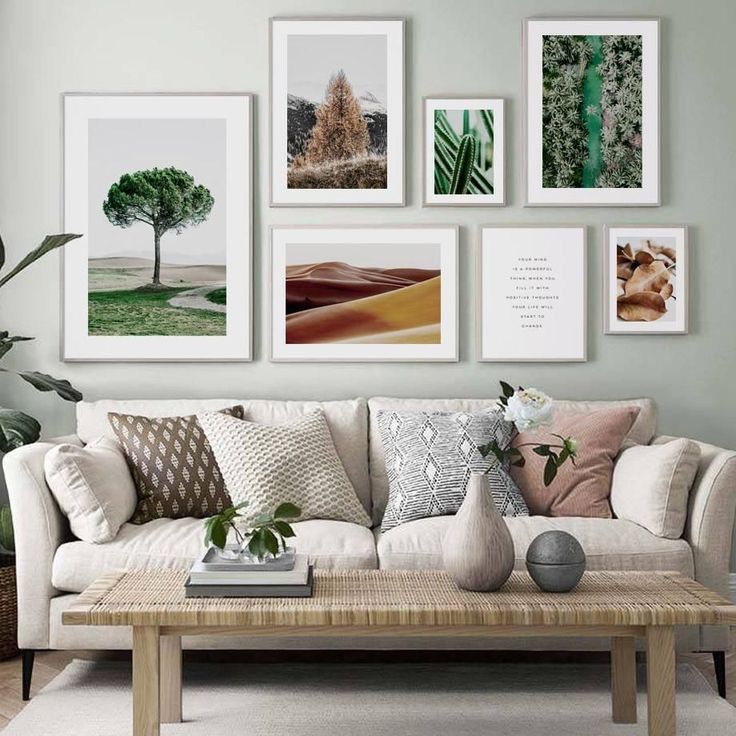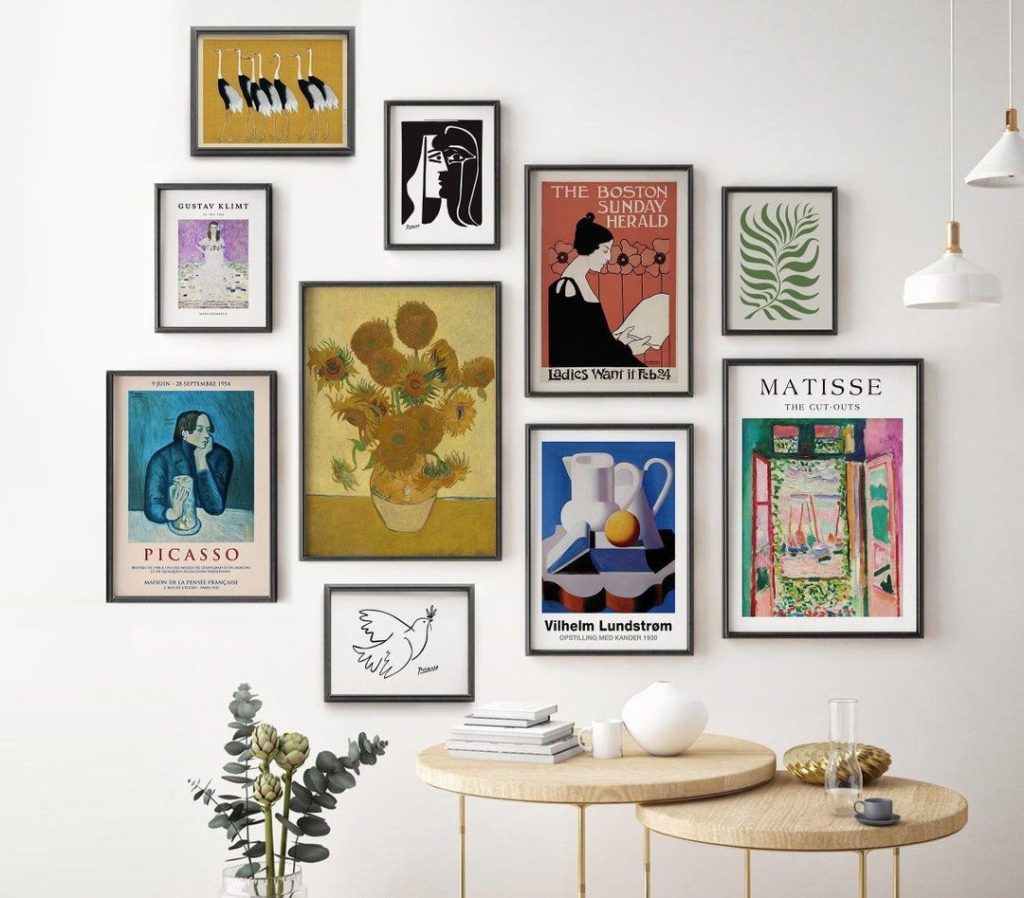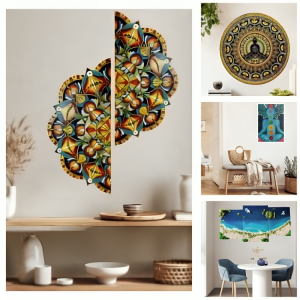Creating a stunning gallery wall is a wonderful way to show off your individuality and improve your interior space. There are different methods to organize your frames for a unified and attractive display, regardless of your preference for a minimalist, grid-based, axis-aligned, or eclectic style. A reference to multiple gallery wall patterns is provided below to help you in placing your frames in the right places.
1. The Minimalist Approach
The minimalist approach is perfect for you if you enjoy designing with simplicity and cleanliness. Less frames with equal spacing are the main focus of this style.
- Perfect Pair: Arrange two prints that relate to each other side by side for a cohesive effect.
- Classic Trio: The focal point is created with a larger central print with two smaller ones on the sides.
- Simple Grid: A balanced and classic vibe is created with four frames that are equally spaced.
2. The Grid Layout
A grid arrangement is perfect for an appearance that is ordered and structured. It gives your wall balance and symmetry.
- Classic: A self-contained grid that is ideal for uniform prints because of its equal spacing.
- Grid Variation: A combination of different frame sizes in a symmetrical and hierarchical layout.
- The Mondrian: A dynamic, asymmetrical grid variation with frames of different sizes.
3. The Axis Approach
Aligning frames along an axis can draw attention to different parts of the room and create a unified design.
- Axis: Frames are aligned along the edge, leading the eye toward other elements in the space.
- Internal Axis: Frames follow the internal axes to create a harmonious and structured look.
- Spiral: Internally aligned frames are placed in a spiral pattern to add movement and direction.
4. The Eclectic Style
The eclectic style is ideal if you prefer a gallery wall that is more creative and expressive. This approach emphasizes originality and an intentional combination of frames.
- Modern: This arrangement, involving various frame sizes and shapes, was inspired by salon-style layouts.
- Vintage: Smaller prints with more space between them create an elegant, timeless feel.
Tips for Arranging Your Frames
- Plan your layout: Arrange the frames on the floor or imagine the pattern using paper cutouts before hanging.
- Maintain consistency: For a polished look, keep the distance between frames identical.
- Use a level: Make sure the frames are properly aligned and straight.
- Consider eye level: Place the central pieces at eye level for a comfortable viewing experience.
You can turn any wall into a stunning gallery that reflects your sense of style and individuality by selecting the appropriate arrangement. Your gallery wall will become the center of attention in your room, whether you choose a simple grid or an eclectic design that flows freely!

